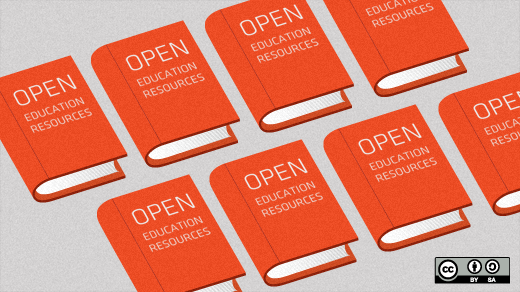Open Course Library has now released 81 high quality, free-to-use courses to the public. Users are can adapt and distribute content under a Creative Commons license and download, remix, or teach using them. All content is stored in Google docs making it easy to access, browse, and download.
The details
These courses were designed by the Washington State Board for Community and Technical College (SBCTC) system and funded by the Washington State Legislature and the Bill and Melinda Gates Foundation.
Courses range from Accounting I to Spanish III. Each course is broken down into a course module folder and a course resources folder. Course module folders often include readings, lesson plans, activities, or assignments. Course resources folder often include a syllabus, exams and quizzes, and copyright information. There's a how-to guide and a frequently asked question section if you need help.
A review
As I taught World History, Western Civilization, and US History at the college level, I was curious to see how these courses fared and started reviewing Open Course Library with World History. I immediately noticed that the history of the Olmecs, Mayans, Aztecs, Incas, and other early Mesoamerica civilizations were missing. Ancient China and Ancient India are represented in World History, but the course still has a heavy Western Civilization focus.
Overall, the World History course was well presented and structured. It was easy to navigate. If I wanted to read about the Celts, I could easily find the week on them. The topics were arranged in a linear fashion and easy to identify. The course module folder comprised an outline with learning objectives, learning activities, and course readings; three Google presentations and lecture notes in a Google doc on paleolithic, neolithic, and megalithic cultures. Quizzes and tests were mainly essay questions and held in the course resources folder.
Unfortunately, I did not have the same ease with the Western Civilization or US History courses. First, the course module folder numbered the weeks. I thus had no idea that mining in the Boise Basin would be covered in week 6 of US History II until I clicked the tab for week 6. Moreover that topic would not necessarily be covered in a US History course on the East Coast, which complicates US History in general. I had a similar situation with identifying what the content would be each week for Western Civilization. I did not guess that the Carolingian Empire would be featured in week 8 until I clicked the tab for week 8.
I tried other subjects to see how they were designed and structured. French I was a delight and user friendly, I thought. There were some Google presentations with French vocabulary and English translations which made larning easy and fun. The course module folder still used numbers for each week and I did not know what would be featured each week in the course.
However, the material followed a logical, linear sequence and took a traditional approach to presenting French I. Most users would find the material and layout easy for an introductory course. I had a different experience with Spanish I and Elementary Algebra, which were not designed or structured as well.
Best way to use it
Open Course Library courses may vary in the ways their courses are presented and structured. Nevertheless, they still offer an opportunity to learn and discover a subject or to gain knowledge. Students may use the courses as a launching pad or to supplement their own studies. Instructors or teachers may freely use the content. Independent learners are also free to use the material for their own purposes and at their own pace.
What Open Course Library is best at doing is presenting introductory college course material in a condensed, simple manner via Google docs or presentations. These courses may not have the videos or the depth, breadth, or rigor that other MOOCs or free, open courses like the Saylor Foundation have. And there's definitely room for improvement. However, the actual content of the courses is still freely available to all and there's something to be said about grabbing an algebra quiz or those French vocabulary words quickly.







5 Comments